THE BIG RESTORATION
It took six years to find, one donor vehicle and over four years to rebuild, but David O’Leary ended up with his dream car
WORDS DANNY HOPKINS PHOTOS JONATHAN JACOB
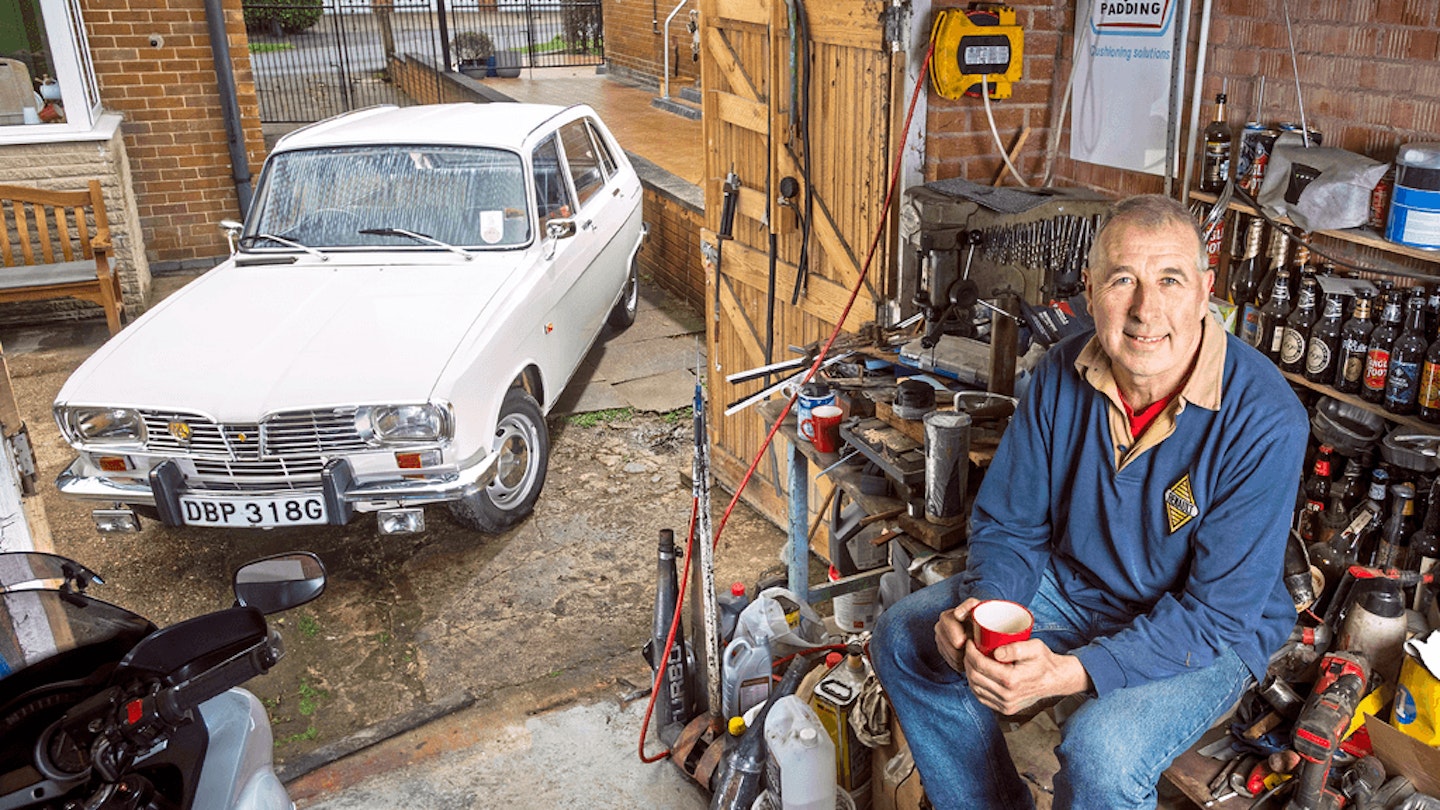
THE RESTORER
David O'Leary lives in in Handsworth, Sheffield. He is a retired bus fitter/mechanic who is also restoring a classic motorbike. He loves classic Renaults and problem solving… a good combination.
AS FOUND
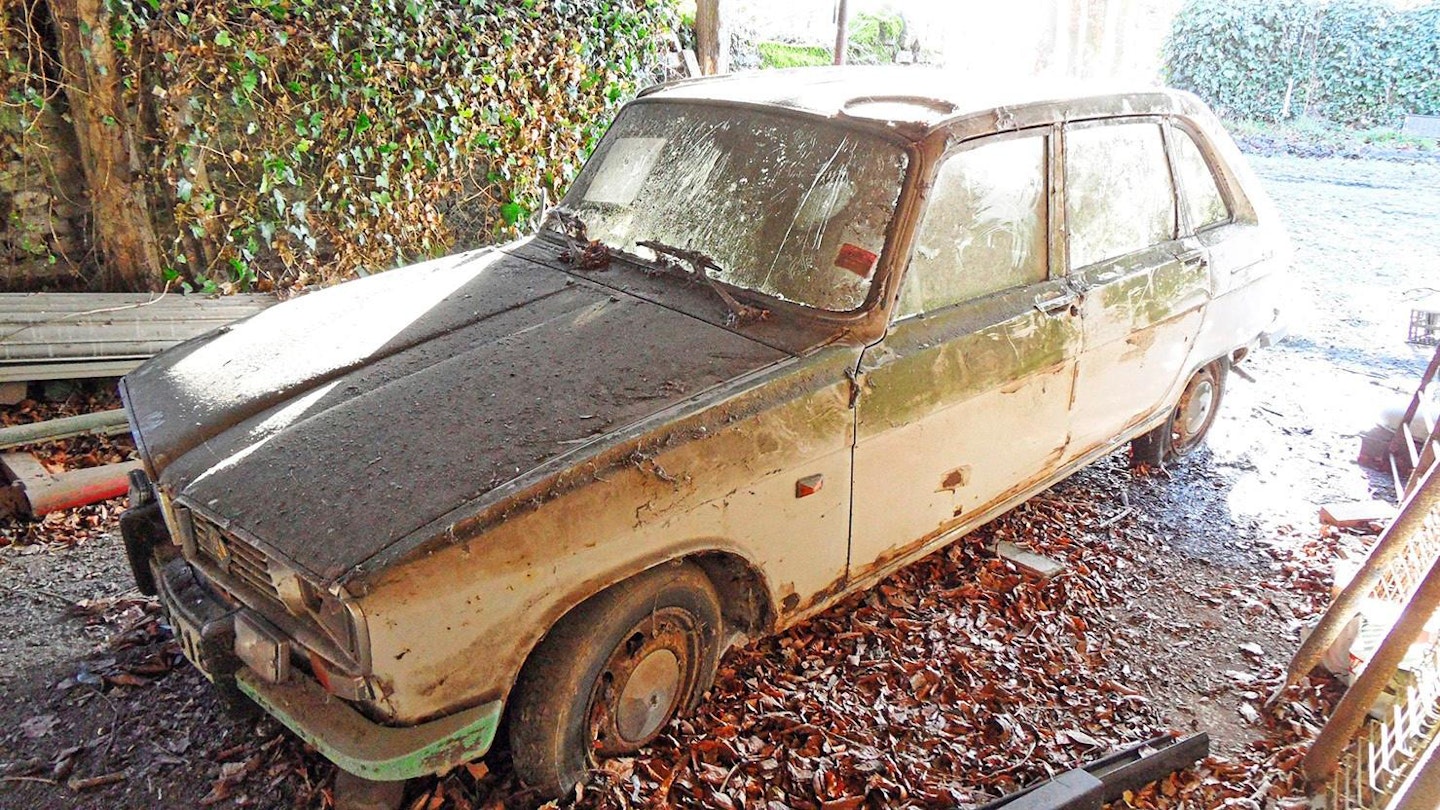
Sleeping beauty… slumbers alone.
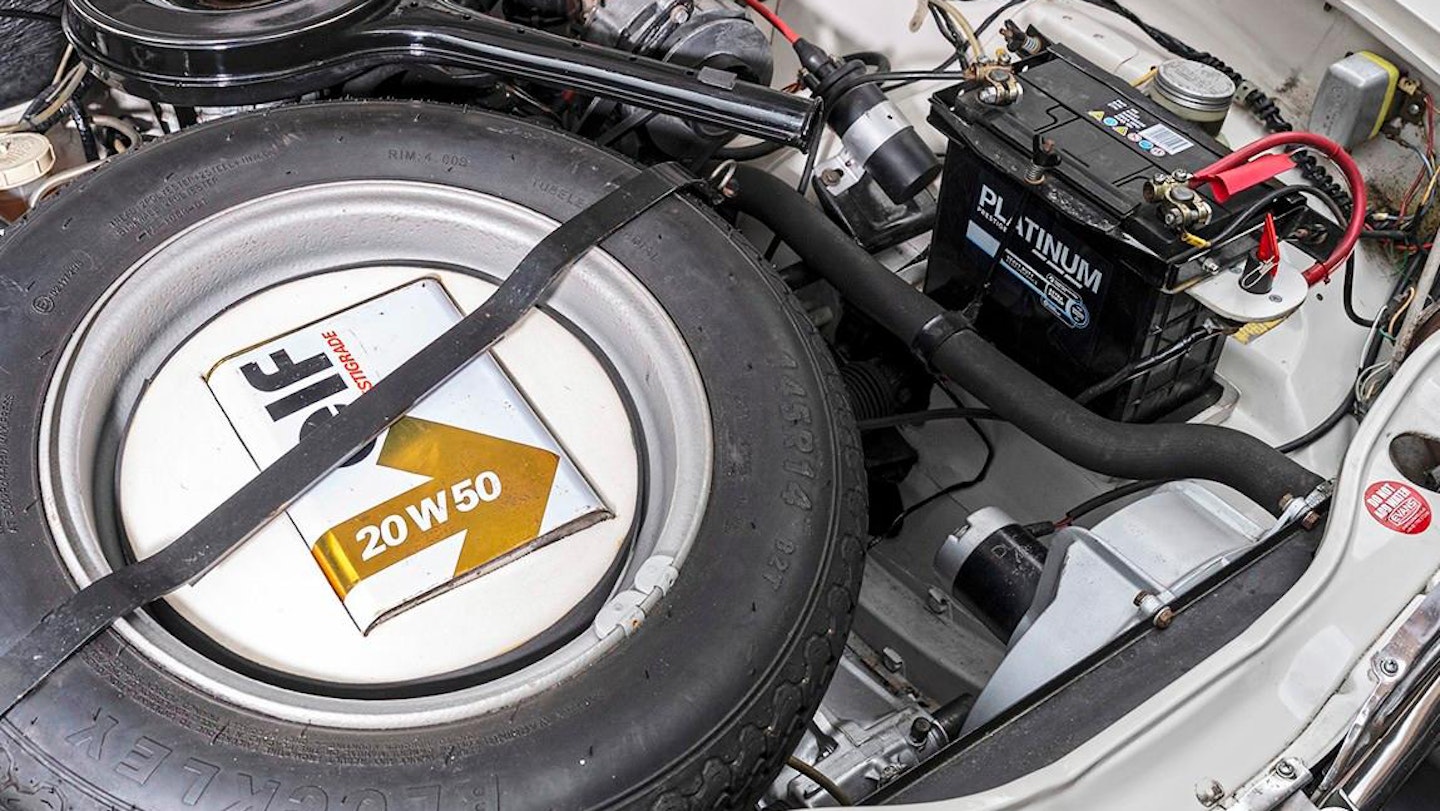
Immaculate bay with homemade wheel insert.
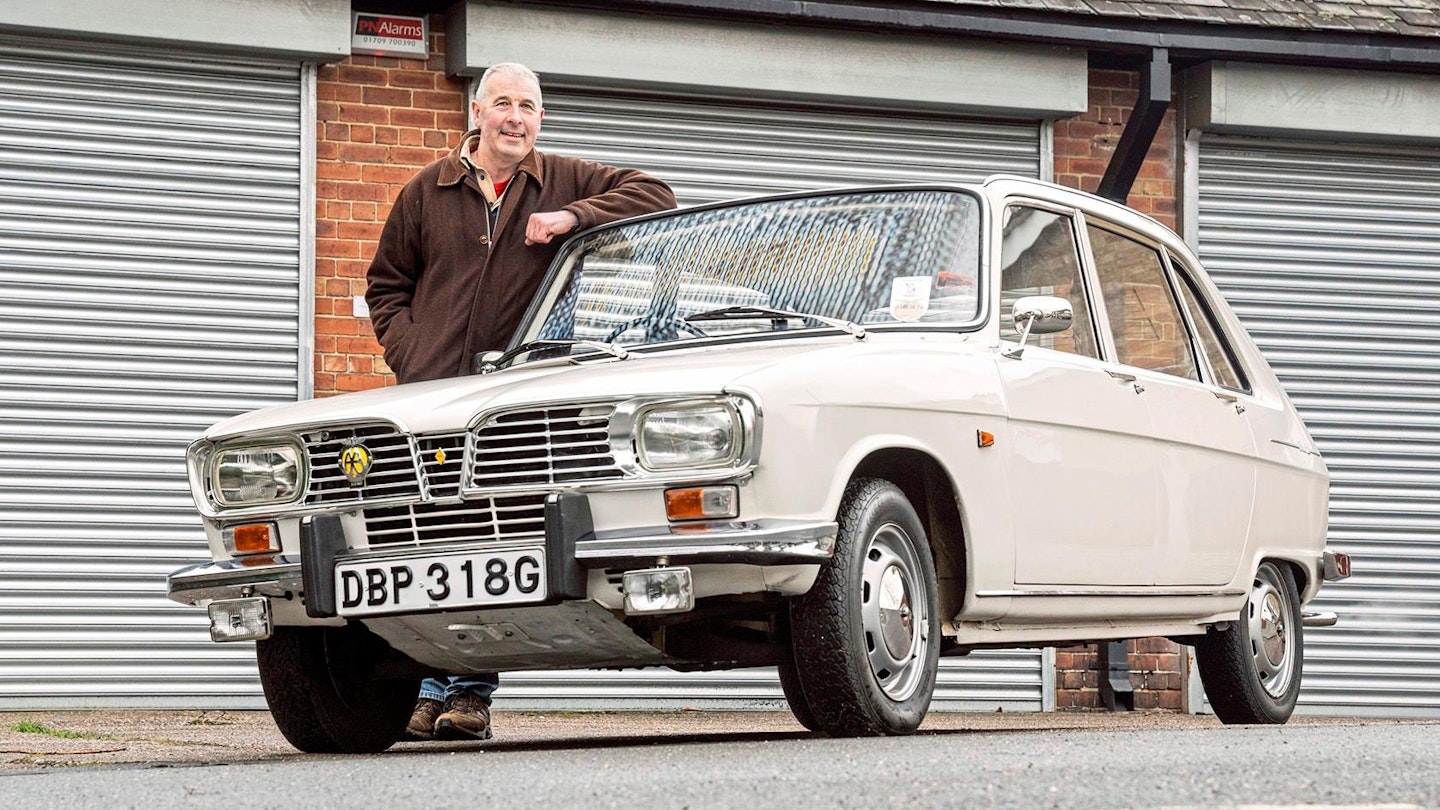
Job done, sheer perfection.
David O’Leary’s Renault 16 GL rolled off the line in 1969, so is one of the last of the early 16s and, as such, is super rare. It came to him on a nostalgic whim: ‘I used to work on one in Australia. I always enjoyed how it drove and so I thought “I’ll have one of those”. I must have been searching for one for six years before this car came up for sale on eBay.’
It was located in Malvern, so David went to have a look at it before bidding. ‘I didn’t win the auction as somebody else out-bid me. However, when the winning bidder turned up, he took one look at the car and said he didn’t want it after all. Fortunately, I’d messaged the seller and asked that if it didn’t work out, could he let me know. And he did.’ David was the only bidder who’d actually been to look at it, so the seller knew he wasn’t going to mess him about. ‘I got it for £650’. Sounds like a bargain, David shakes his head as he says: ‘Well, in my naivety and excitement I thought I could just stick some sills on it and run it as a bit of an oily-rag, but four and a half years later, here we are’.
‘It was a toss up between the spares car and this one’
The car’s pre restoration story was telling. ‘The back story of the car is that a gent – we’ll call him grandad – bought the car new in Exeter. He then gave it to his son, who lived in Malvern, who parked it up in 1982 in a lean-to. I suspect the head gasket might have gone. Hence why it was seized up. I bought the car off the grandson, so it had been in one family until I got it in 2018… but in one shed for more than 35 years.’ One side appeared to be in worse order than the other, this was probably the side most exposed in the lean-to.
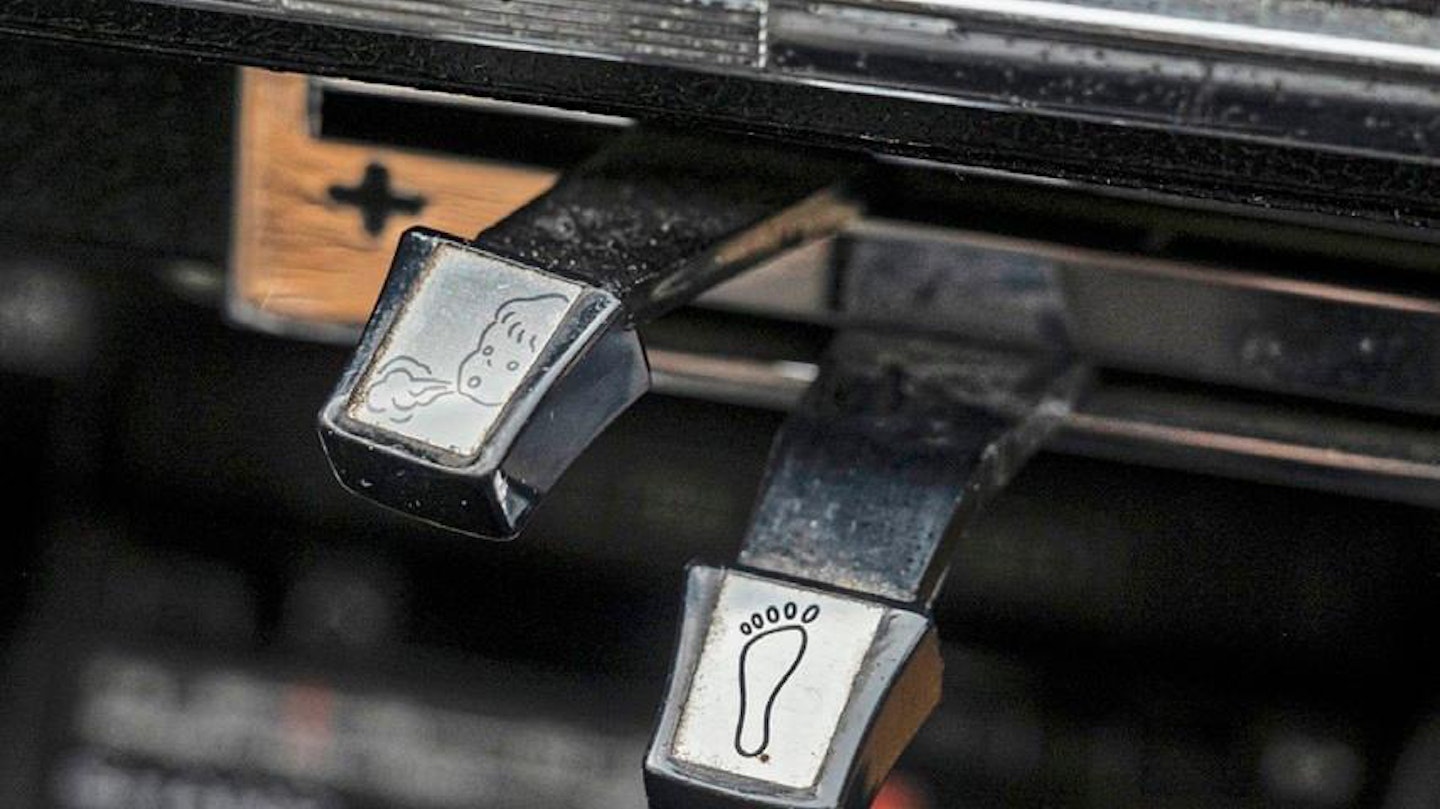
A puffing cherub and a foot… heater controls!
The reality set in once David had taken the engine out – which was seized solid – and started looking under the wings. ‘The entire footwell was missing’. At this point, Exhibit A is presented to the court – David holds up a proper bit of rust, not just your common or garden standard rust, but a sizable chunk. He says: ‘This is what they call your web. This is the inner sill and the outer sill, and this web is what gives it all its strength’. Inspecting the unbelievably frilly remains reveals the web was only held together by air. ‘It gets better than that. This is the rear suspension mounting point’ he says ruefully holding up another chunk. ‘The sill should continue through to the wheelarch and then the rear torsion bar suspension all bolts to that. Rust here is what used to kill these cars back in the day. You have to take all the suspension off to repair the mounting points. That’s what I was confronted with when I started working on it’.
The true extent of the task that lay ahead was huge but David rolled his sleeves up and cracked on. ‘Failure wasn’t an option. I’d convinced my wife that I could do it and I’d got my mind set that there was going to be a lot of fabrication, just not as much as I anticipated.

Multiple seat position variations.
Luckily, I found a donor car.’ Initially he was just going to pinch the rear lower quarters from it but there were many more parts on it that he could use. ‘I cut a lot of pieces off that and grafted them onto this car, which saved me a lot of work.’
In terms of spare parts, Renault 16’s are not well-served, ‘Buy whatever you can, when you can and hoard them. Replacement wings and bonnets simply don’t exist so it was a case of grafting bits off the donor car, and even then, these wings aren’t off the donor car. I had to use bits of my original car to repair these ones.’ At least all the grafted parts were genuine Renault. ‘The only aftermarket parts on the body are the sills, which were a pain as they were over-sills, so they’re made just that bit bigger, and you have to make them fit.’
The donor car came from a chap in the club called Mike Stokes. ‘Initially, I bought the sills and a few other bits, but then Mike sadly passed away, and his stock was being sold off. I went to Spalding to buy everything I thought I’d need in the future and, while I was there, there were two 16s that were going to be scrapped, but I ended up paying £50 for the entire donor car.’ Back in Sheffield David realised it was a toss-up between saving the original car or the donor vehicle, ‘but mine had the better history and is an earlier model. I could have quite easily saved the other one instead. But I’d have still been repairing this one if I hadn’t bought the other car’. £50 well spent!
Stripping the car down wasn’t the starting point, however, as the first big job on the to-do list ended up being the engine. ‘My brother and I spent a good day or two trying to get it to unseize it. We were putting steam into the bores, left diesel in it for weeks, but it just wouldn’t move. A machining guy that I know told me he was planning to retire, so I knew I had to get it to him before he did. I took the head and block down to him and he removed the the con-rods. I sourced new pistons, then he used his press and said it took ten tons to get the pistons out of the bores!’
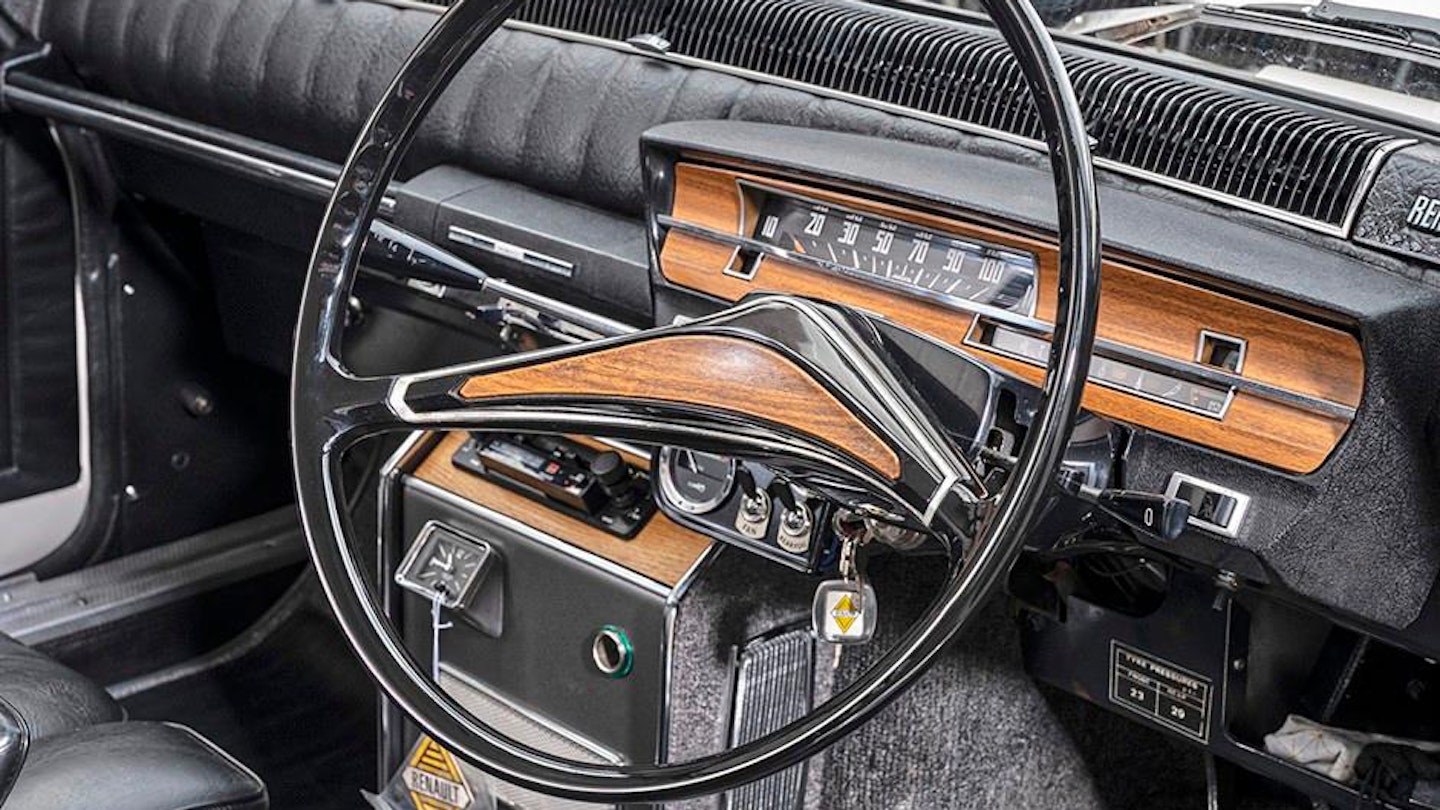
David made the centre radio console.
Then I came the big body strip-down, ‘I think it had just had a service and MOT when it was originally laid up, because all the brakes were like brand-new, even after all that time. I think someone had spent a lot of money on it and then the head gasket had gone, so they probably thought “I’m not spending anymore.” Someone had obviously tried to take care of it, as wherever rust was starting to come through they’d brushed it with grease.’ Sadly, the time it had stood took its toll on the areas that hadn’t been greased.
‘With the machining done, I built the engine up straight away. It’s a 1470cc pre-crossflow engine. Getting engine parts isn’t too bad, but the biggest problem I found for this was finding gaskets for the carburettor. You just can’t get them. I ended up buying a brand-new carburettor on eBay, which was a real stroke of luck and that negated that big problem. I also found new rubber seals in a box of bits at Beaulieu. Seriously that was a crucial find. Even in France they are rare.’ Proof that the International Autojumble can still do its thing.
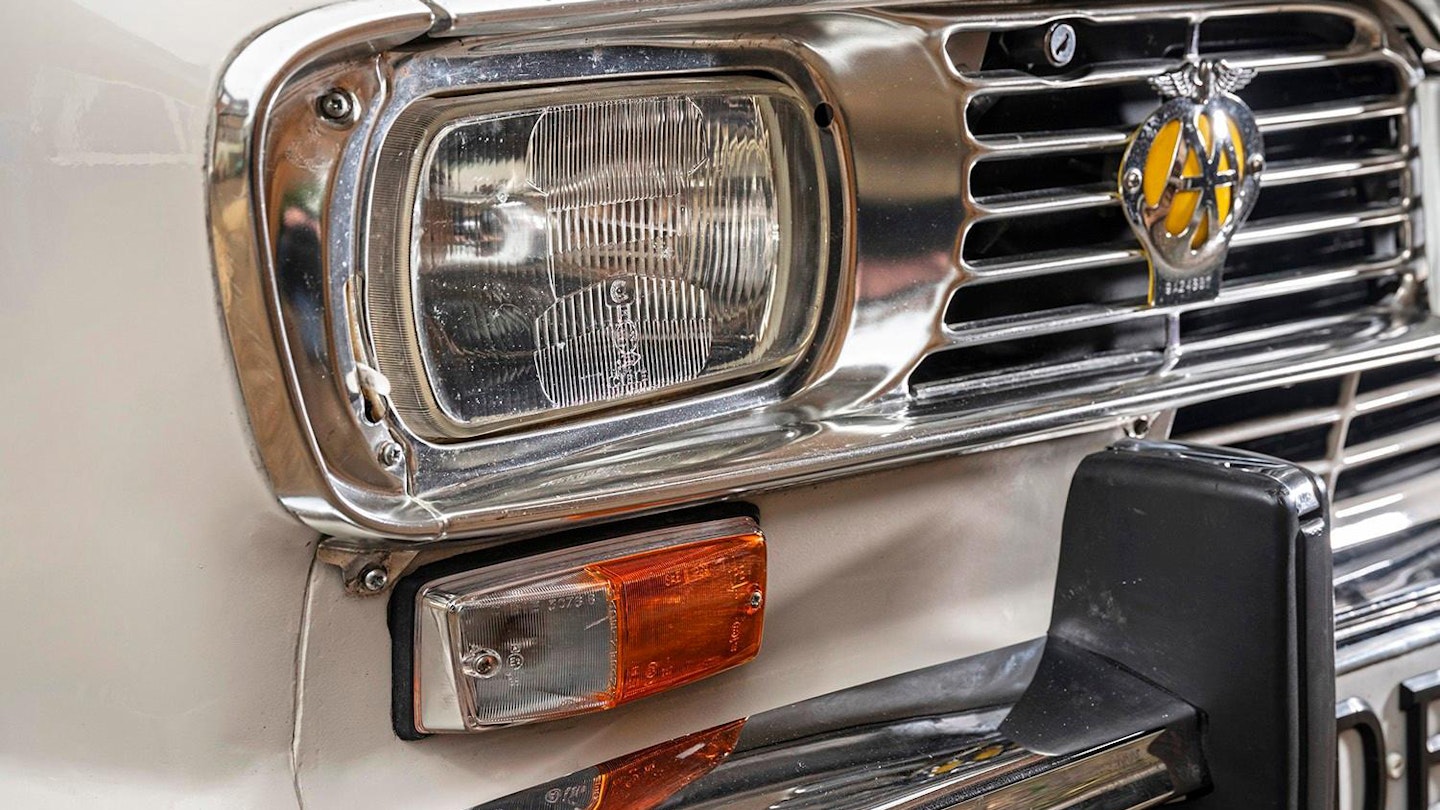
Flick a lever, LHD head lights. Brilliant.
Even so, David is still on the hunt for parts. ‘I’m still working on it. If you look closely, you’ll see there are bolts missing from the back of the bumper. That’s because they’re later bumpers and the brackets are 15mm deeper on later ones. What you see here is the original middle, but as these are later ones, it’s kicking them out as they don’t line up, so I’ve had to repair my originals, which are actually still at the chrome platers at the moment. A lot of people say everything on a Renault 16 fits a 16, but it doesn’t.’ David explains that ball joints and bonnets are different, early wings have different indicators. The bumpers are different. Even the clutch cables are different, ‘so you have to be really careful with parts.’
With the engine rebuilt, David began body repairs: ‘I pulled the wings and bonnet off and started on a corner, then just worked my way around. All of the repairs were done on my patio at home, under a tarpaulin cover. That’s one of the reasons it took four and half years. The weather played its part’. Asking how he got that past his wife, he laughs: ‘I told her it wouldn’t be that long, that I would be out and she could have the space back in a few months. Thankfully she has been extremely understanding.’
Bit by bit, the project progressed. Fortunately, David had welded before. He says: ‘I had done bits before. I trained as a fitter on the buses. While I wasn’t trained in bodywork, over the years I had got into welding. I enjoy welding and making panels. That’s the fun part. I don’t like filling and rubbing panels down or prepping for paint. I enjoy the fabrication.’
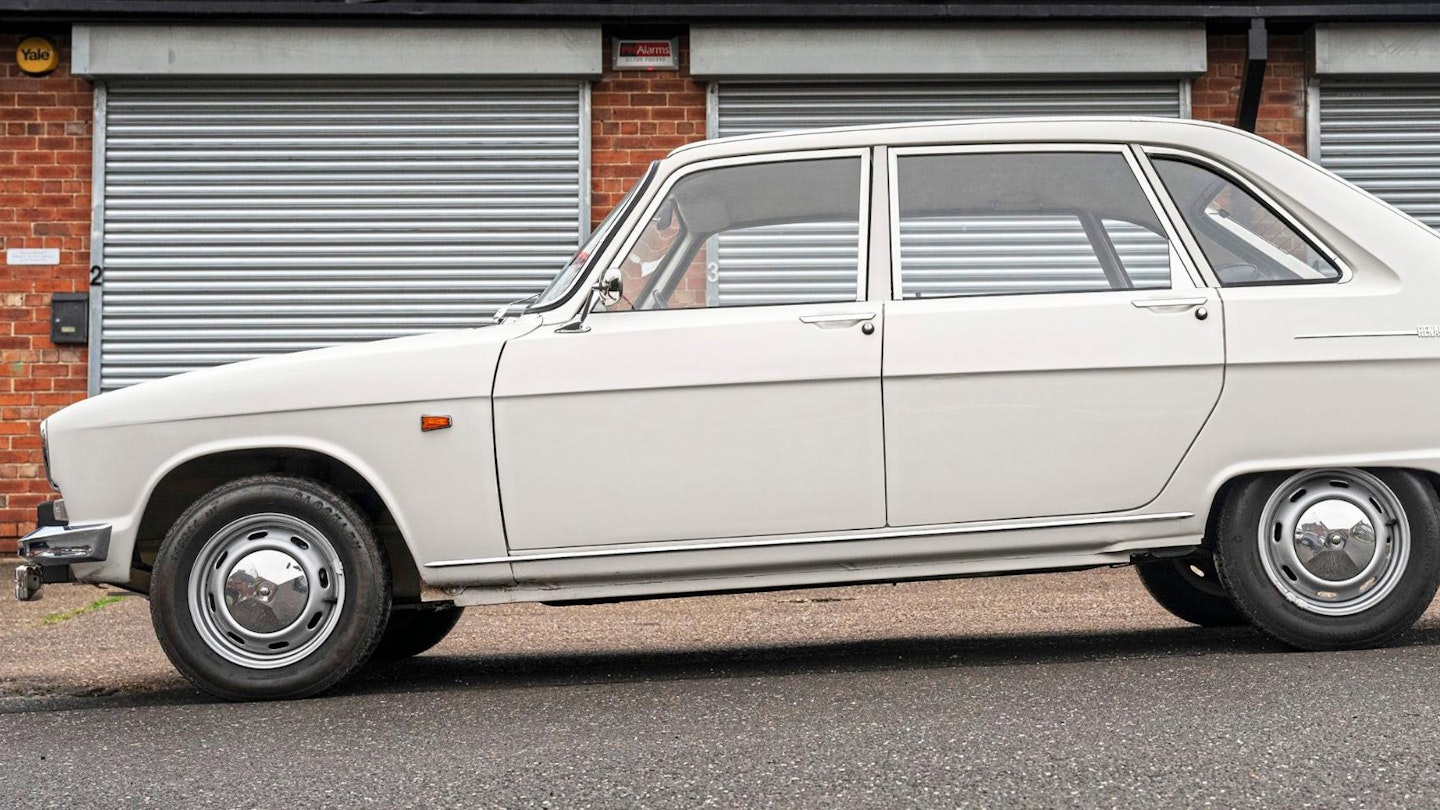
And yes, one wheelbase is longer than the other.
With the metal repairs done and dusted, David turned to an old friend for the paint. ‘I coerced him into painting it and took it over to his place. Once it was done, we came back here and assembled it. I got the doors back on and the windows fitted first as I needed it to be watertight. Actually, thinking about it, the engine went in before the rest of it went for paint. We painted the engine bay here under the cover. Once it was watertight, the interior went back in. ‘The only areas I had retrimmed were the bottoms of the seats, everything else is original. I made the centre console, and I did have some mats made, but it’s still got the original carpets underneath.’
‘Basically, I tried to keep as much of the original car as possible. Even the numberplates. I removed the letters and replaced the backing. When I take it to shows, people ask if it’s been restored and that gives me so much pride. It’s not a trailer queen. I’ve done 1200 miles to France in it.
‘This has taken me four and half years, but I retired and had two years solid on it. If I hadn’t retired at that point, I’d still be working on it. It’s been a real labour of love.’ The 60th anniversary of a remarkable car could not be celebrated by a more fitting endeavour.
Here’s how David did it…
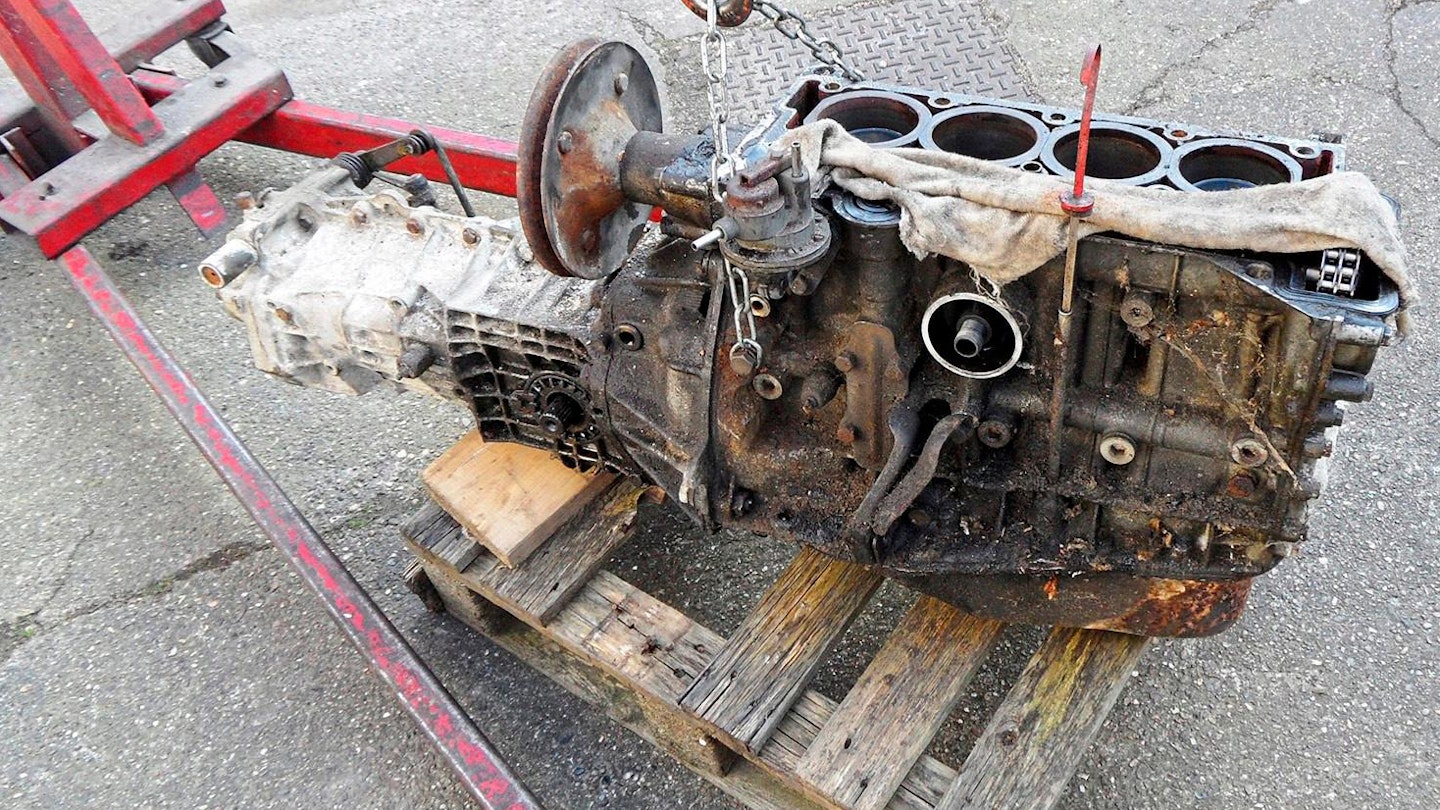
1 JUNE 2015
The 1470cc engine was seized. Really seized. It took a 10-ton press to move the pistons – the last job for David’s engineer friend.

2 MAY 2016
The spares car that David bought was actually in slightly better condition than the car he was restoring. He used sections from it in the end… lots of them!
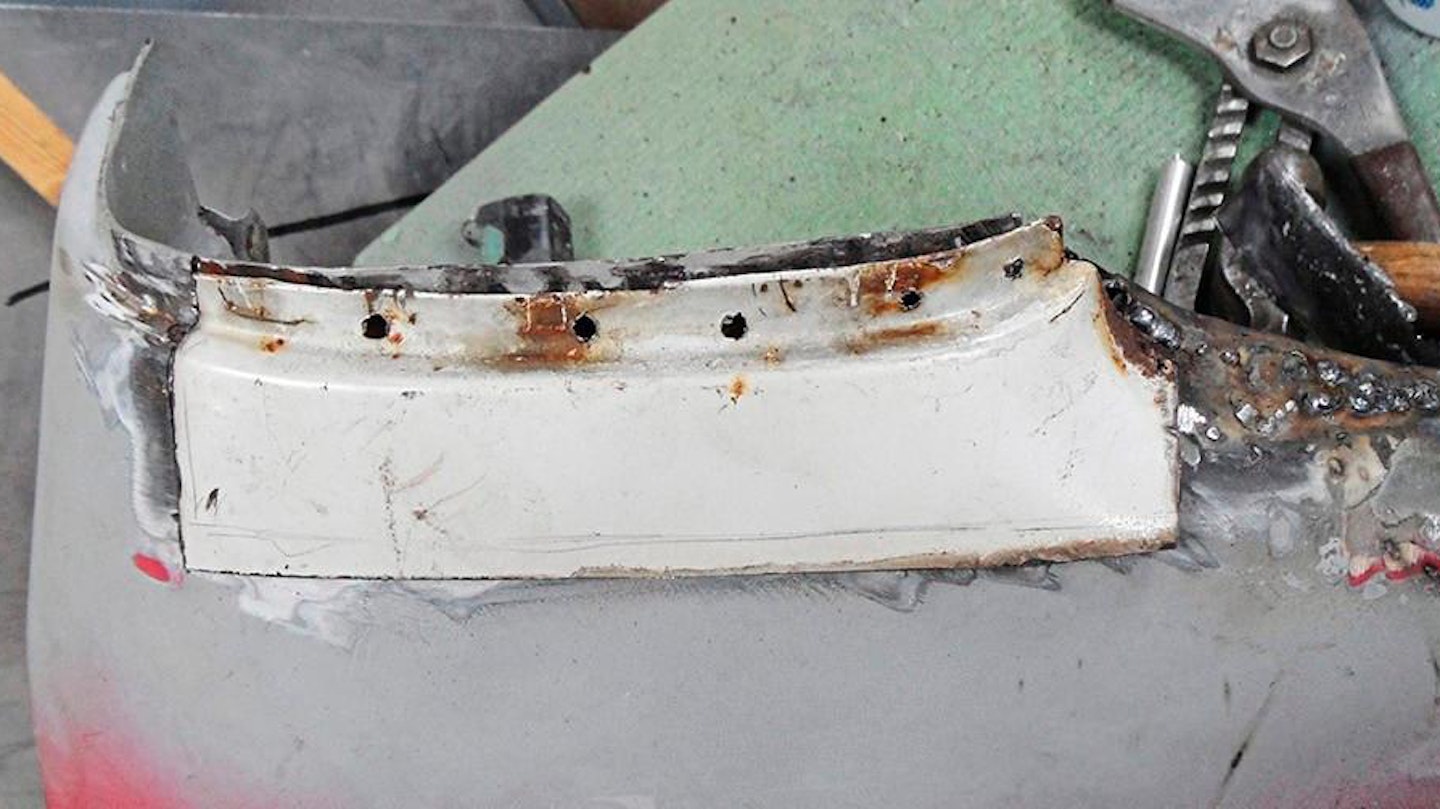
3 JAN 2017
Hundreds of tiny individual panels ended up being grafted on the the 16. Under the white paint it is a patchwork of genius.
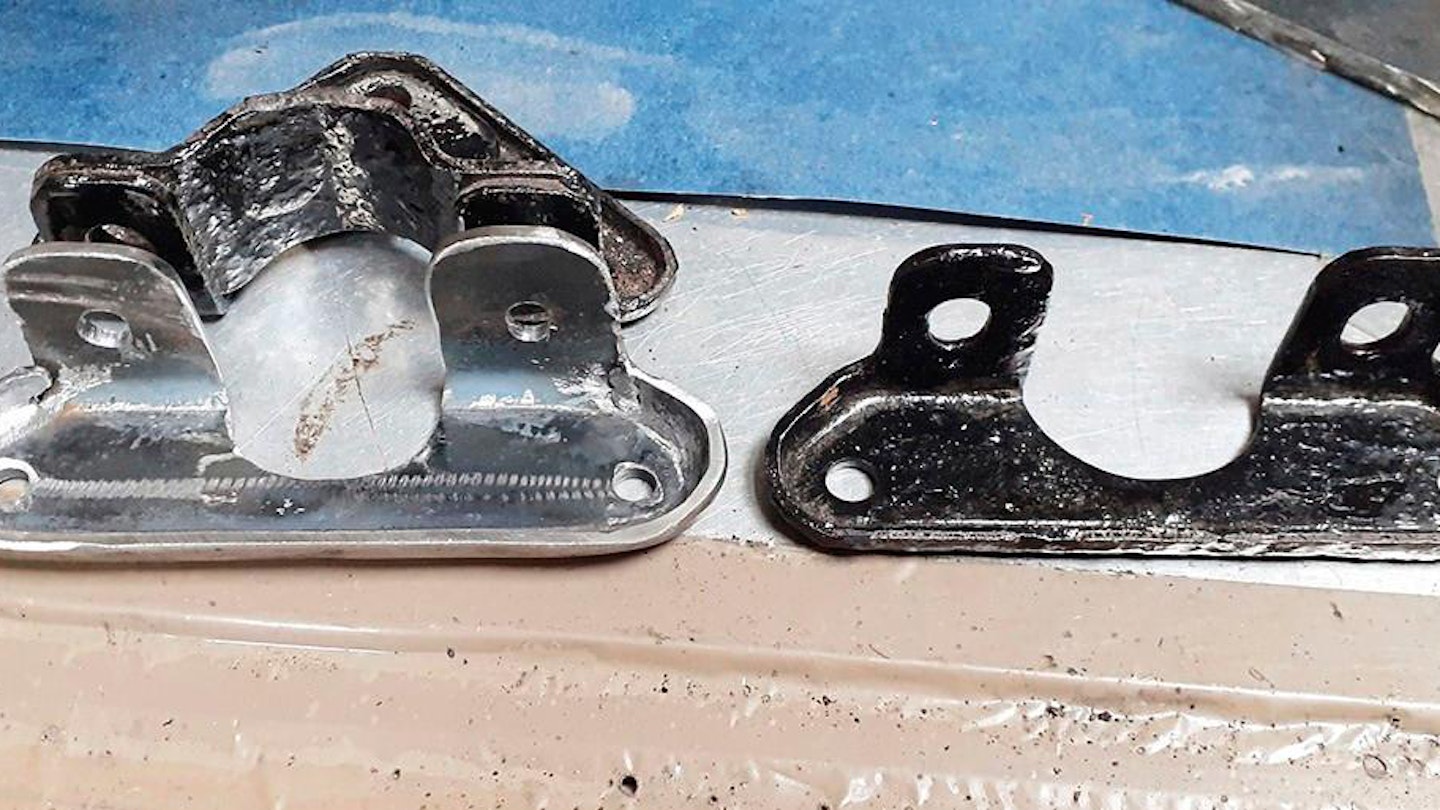
4 MAY 2017
David also ended up doing a lot of his own fabrication including this torsion bar retainer. Seen with the pattern.

5 MARCH 2018
Bodywork complete, ready for paint preparation on the patio… a patio that would be family-friendly again after some four years.
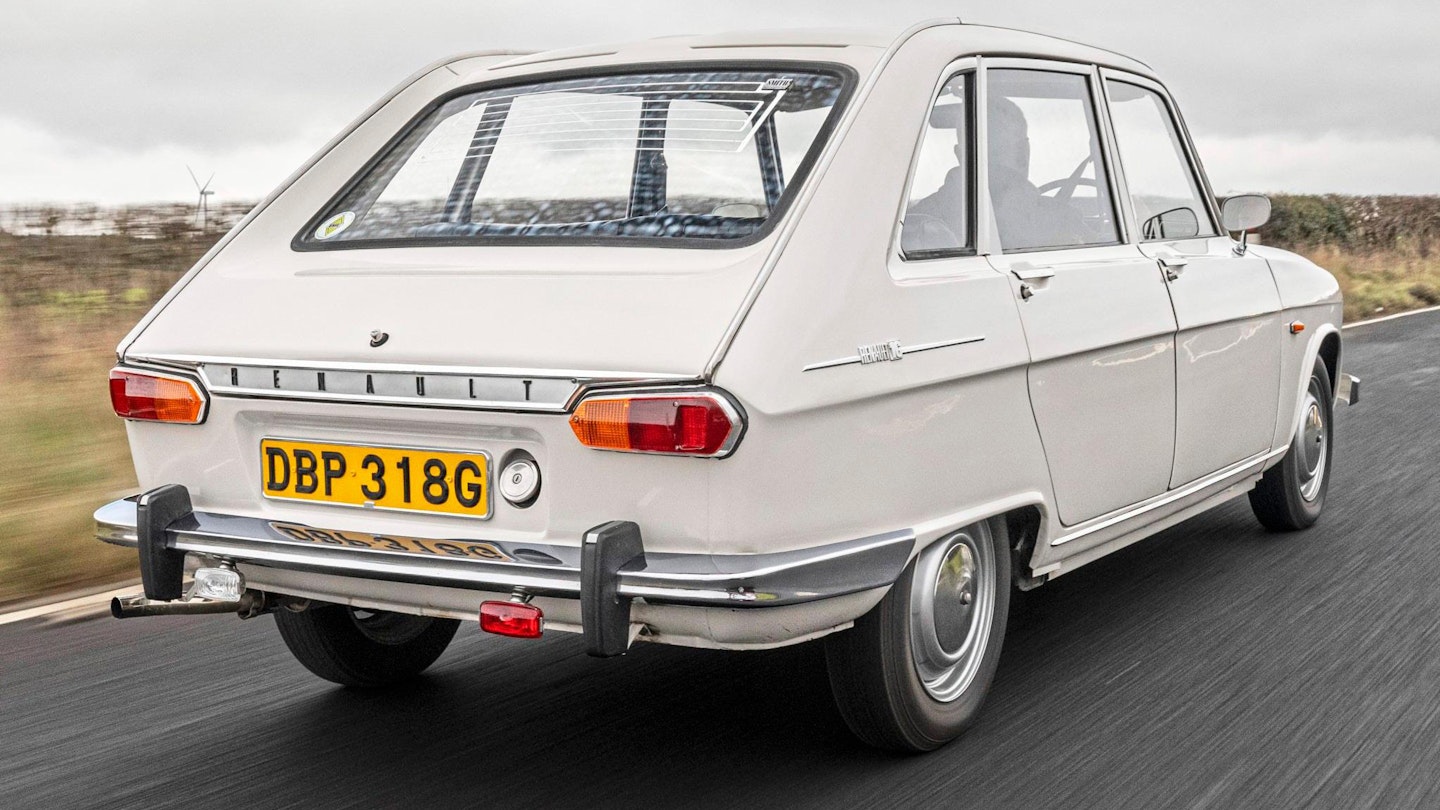
60 years of the 16 in 2025. Feels modern.
TECH SPEC: 1969 Renault 16GL
Engine 1470CC/4-cyl/OHV
Power 54bhp@5000rpm
Torque 108lbft@2800rpm
Gearbox 4-speed manual
0-60mph 19sec
Top speed 90mph
Fuel economy 30mpg
WHAT'S IT LIKE TO DRIVE
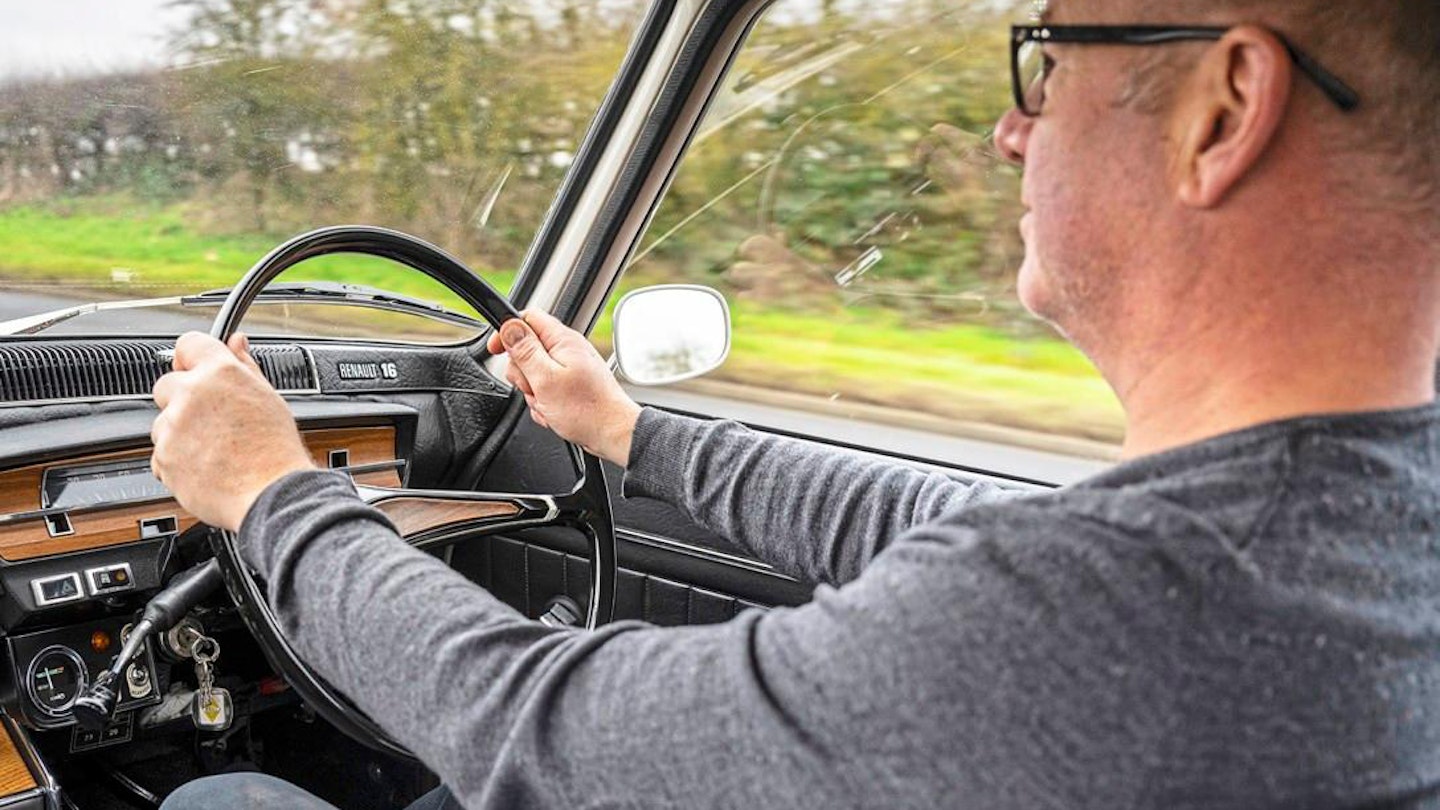
Above all, comfort.
I've driven a Renault 16 once before, but that was 24 years ago, so sinking back into the comfy vinyl driver’s seat and relearning Renault 16 is a fresh experience. The first thing that immediately makes itself apparent is how comfortable the car is, both in terms of driving position and seat comfort. Flick the engine – a sewing machine impersonator – on, engage first gear and float away.
On the road manners are astonishing. The 16 seemingly hovers and leans in corners, but without panicking the horses. Everything feels light and precise, but also soft and malleable. The ride is better than any car I have ever driven bar a Citroën. It simply ignores bumps and undulations – it’s more comfortable than my dad's Jag and that rides on air. The 1200L engine is perky enough to keep up with modern traffic and, once you have learned the controls, it is a delightfully intuitive experience to pilot this magnificent piece of road history.
It’s not dynamic, you don’t get much feedback from the road, but that’s not really the point. This is a practical work of genius that can take you to the moon and back without stress.
USEFUL CONTACTS
Renault Owners Club, renaultownersclub.com
Renault 16 Shop, renault16shop.com
Restorer of the Year 2026
Restorer of the Year celebrates the shed heroes who, every year, produce extraordinary work breathing life back into basket cases and bringing classics that are going nowhere back to the road. With our sponsors Anglia Car Auctions, we’ll scour the land to bring you the very best then, early in 2026, you get to nominate your favourite restos. From your top ten nominations our panel of experts will select the top five nominees so that you can meet the winner at the PC Classic Car and Restoration show at the NEC next March.
Subscribe to a PC Print+ Subscription today and you'll get instant digital access PLUS FREE UK delivery so you'll never miss an issue again. Check out our offers today.
